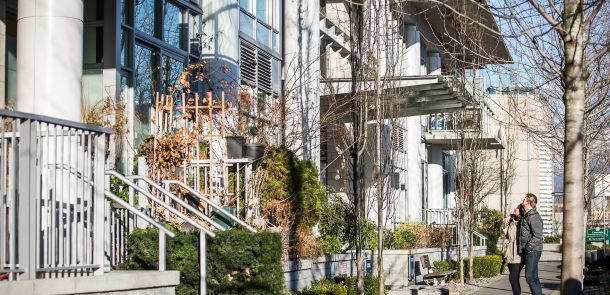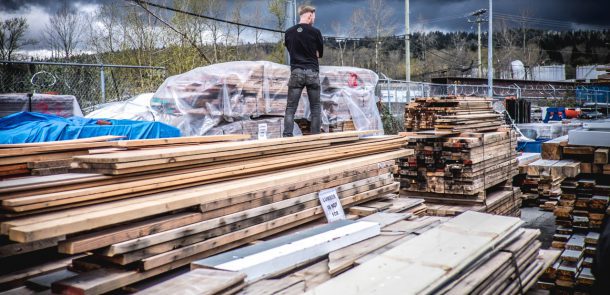Imagine your own little cottage located in Vancouver. That’s what laneway houses offer–a stand-alone home that’s modern and compact. But what’s the catch?
A couple of years ago I made the trek to the city’s east side. Beyond East Van, past the hipster bars and unique eateries of Main Street and Commercial Drive, to the sleepy side of Vancouver. I traded my cliché Kitsilano lifestyle and apartment for a Killarney area laneway house in what I now dub “The Great Experiment.”
Here’s what I learned about the pros and cons of laneway house living:
Pros
- Your own house!
- Private entrance
- No shared walls/floors with neighbours, so you can crank up the tunes!
- New, recently constructed as the concept of laneway housing is still so fresh.
- No waiting for the elevator and one flight of stairs, max.
- Multi-level appeal over comparable basement suites.
Cons
- Heating costs are much higher. Electric baseboard heat for 4 walls on 2 floors over an unheated garage makes for pricey hydro bills (about $180 every two months in winter, compared to $60 in an apartment).
- Noise from garbage, recycling and green waste trucks.
- Paparazzi – curious passersby and future laneway home builders snapping photos, seriously!
- Laneway curb appeal just isn’t there among garages and garbage bins.
- Small second floors or often gabled ceilings.
Overall, the experience was very positive. My own little house where I could watch movies with full bass and surround sound, come and go without bumping into obnoxious neighbours in the elevator, and pull right up to the door to unload groceries. Heating costs were a big shock and the frequency of garbage and recycling pickups is hard to ignore when you consider a separate, clunky diesel truck comes 2-3 times per week right outside your bedroom.
Tips for choosing a laneway home
Here are some things to look for when choosing a laneway home:
Corner lots: Corner lots with front door facing the side street beats having to access via the lane or backyard of the main house.
Outdoor space: Some sort of porch, patio, garden enhances the appeal.
Use of garage: Not only for storage or to keep your car secure, but to have control over any noise associated with its use.
Contemporary walls versus gabled ceiling for second floor: Usually means less floor space, but also less chance to bang your head.
Bedroom on main floor, living space on upper floor: You spend most of your time in the living room or kitchen, so elevate this experience with layouts that place these rooms above ground.
Neighbourhood that fits your lifestyle: If urban life is important, consider how living in a residential-only neighbourhood might affect your lifestyle before signing the lease.
Alternative heating options: Look for laneway homes with alternative heating options to save on hydro costs.
My laneway experience was enjoyable, but the thrill of having my own little home faded as I constantly left the neighbourhood to seek out the lifestyle I was accustomed to. And savings in rent were diminished by high heating costs and additional funds spent on travelling back to Kits. I ended up moving back to Kits, but would consider a laneway home again with the above considerations factored in. My ‘great experiment’ could easily be your ‘best decision ever.’








